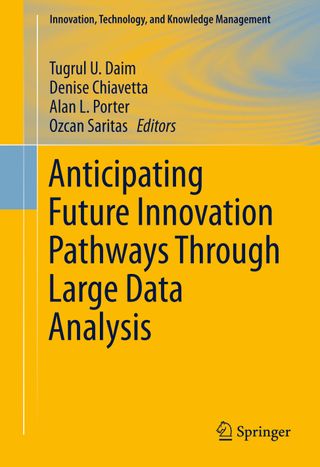?
Tech Mining for Emerging STI Trends Through Dynamic Term Clustering and Semantic Analysis: The Case of Photonics
Tech mining (TM) helps to acquire intelligence about the evolution of research and development (R&D), technologies, products, and markets for various STI areas and what is likely to emerge in the future by identifying trends. The present chapter introduces a methodology for the identification of trends through a combination of “thematic clustering” based on the co-occurrence of terms, and “dynamic term clustering” based on the correlation of their dynamics across time. In this way, it is possible to identify and distinguish four patterns in the evolution of terms, which eventually lead to (i) weak signals of future trends, as well as (ii) emerging, (iii) maturing, and (iv) declining trends. Key trends identified are then further analyzed by looking at the semantic connections between terms identified through TM. This helps to understand the context and further features of the trend. The proposed approach is demonstrated in the field photonics as an emerging technology with a number of potential application areas.
В книге
